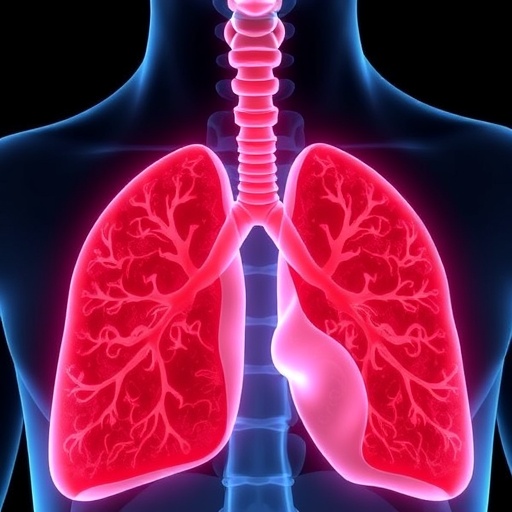Credit: WFIRM video
WINSTON-SALEM, N.C., – Feb. 28, 2019 – Imagine a day when a bioprinter filled with a patient’s own cells can be wheeled right to the bedside to treat large wounds or burns by printing skin, layer by layer, to begin the healing process. That day is not far off.
Wake Forest Institute for Regenerative Medicine (WFIRM) scientists have created such a mobile skin bioprinting system – the first of its kind – that allows bi-layered skin to be printed directly into a wound.
“The unique aspect of this technology is the mobility of the system and the ability to provide on-site management of extensive wounds by scanning and measuring them in order to deposit the cells directly where they are needed to create skin,” said Sean Murphy, Ph.D., a WFIRM assistant professor who was lead author of the paper published this month in Nature’s Scientific Reports journal.
Affecting millions of Americans, chronic, large or non-healing wounds such as diabetic pressure ulcers are especially costly because they often require multiple treatments. It is also estimated that burn injuries account for 10-30 percent of combat casualties in conventional warfare for military personnel.
The major skin cells – dermal fibroblasts and epidermal keratinocytes – are easily isolated from a small biopsy of uninjured tissue and expanded. Fibroblasts are cells that synthesize the extracellular matrix and collagen that play a critical role in wound healing while keratinocytes are the predominant cells found in the epidermis, the outermost layer of the skin.
The cells are mixed into a hydrogel and placed into the bioprinter. Integrated imaging technology involving a device that scans the wound, feeds the data into the software to tell the print heads which cells to deliver exactly where in the wound layer by layer. Doing so replicates and accelerates the formation of normal skin structure and function.
The researchers demonstrated proof-of-concept of the system by printing skin directly onto pre-clinical models.
The next step is to conduct a clinical trial in humans. Currently, skin grafts to treat wounds and burns are the “gold standard” technique, but adequate coverage of wounds is often a challenge particularly when there is limited availability of healthy skin to harvest. Skin grafts from donors are an option, but risk immune rejection of the graft and scar formation. With the WFIRM bioprinter system the researchers could see new skin forming outward from the center of the wound and this only happened when the patient’s own cells were used, because the tissues were accepted and not rejected.
“The technology has the potential to eliminate the need for painful skin grafts that cause further disfigurement for patients suffering from large wounds or burns,” said WFIRM Director Anthony Atala, M.D., and a co-author of the paper. “A mobile bioprinter that can provide on-site management of extensive wounds could help to accelerate the delivery of care and decrease costs for patients.”
“If you deliver the patient’s own cells, they do actively contribute to wound healing by organizing up front to start the healing process much faster,” said James Yoo, M.D., Ph. D, who led the research team and co-authored the paper. “While there are other types of wound healing products available to treat wounds and help them close, those products don’t actually contribute directly to the creation of skin.”
###
The research was funded by the Telemedicine and Advanced Technology Research Center and the Armed Forces Institute for Regenerative Medicine. The authors declare no competing interests.
Co-authors include: Mohammed Albanna, Kyle W. Binder, Jaehyun Kim, Shadi A. Qasem, Weizin Zhao, Josh Tan, Idris B. El-Amin, Dennis D. Dice, Julie Marco, Jason Green, Tao Xu, Aleksander Skardal, James H. Holmes and John D. Jackson, all of WFIRM or the Wake Forest School of Medicine.
Media Contact
Bonnie Davis
[email protected]
Original Source
https:/
Related Journal Article
http://dx.




